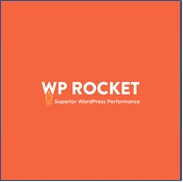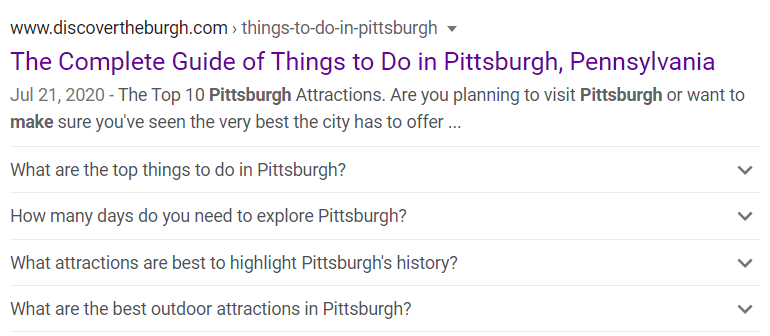Published by Jeremy. Last Updated on June 19, 2024.
Disclaimer: This Week in Blogging uses demographic data, email opt-ins, and affiliate links to operate this site. Please review our Terms and Conditions and Privacy Policy.
If you are thinking about starting a blog (perhaps a 2nd or 3rd blog), or run a site that is not monetized, you may be thinking the question we all have on our minds: how do I make money blogging?
While we will be the first to admit that there is no one-size-fits-all business model for blogs, as the field is truly quite versatile, when we stopped to think of it we realized there are five main models that blogs follow to earn revenue.
So in this one, we wanted to take a broad look at the most common business models blogs have, share some pros and cons of each, and explain why the best model of all may be doing a bit of everything!
Note: While income potentials vary, we will try and equate models with each other by using the Revenue per 1,000 impressions (RPM) term. While there is no hard and fast rule that Model [X] will always make RPM [Y], we will fill the gaps in with our experiences of what we have seen in the industry.
An Ad Revenue Machine
First, let's dive into one of the most popular blogging business models- making an income via programmatic advertising.
Programmatic display advertising is something you see on virtually every website out there. These ads appear automatically on enabled sites and often use your browsing history (via cookies) to deliver tailored ads to your interests. Some websites go heavy on these and some go light, but we'd argue that display advertising is, quite literally, what powers sites across the internet from a revenue standpoint.
The reason for this is pretty simple- the income potential from programmatic display advertising can be quite lucrative. But there is a catch- the more established sites (with strong US and other primarily English-speaking audiences) truly benefit here.
This is because many ad networks exist to help bloggers monetize their sites. Some, like AdSense, accept virtually everyone with the trade-off being lower rates. Others, like Mediavine, are much more exclusive with more stringent entry requirements (50,000 sessions per month and a strong English-speaking audience, for example) with the benefit of being a significant earning increase be it 3x, 5x, or even 10x from the lower paying networks.
Ultimately, display ads pay on an RPM basis and end up averaging out to pennies per view. On Google AdSense, for example, we historically only ever received $1-$3 RPM (or $0.003 per page view). On Mediavine, on the other hand, our sites have received upwards of $20, $30, or even over $60 session RPM on some of the best days ($0.02 to $0.06 per session).
As such, generating revenue via the advertising model is all about scale. More traffic typically means more money, and, for those who can keep traffic consistent, it offers a great passive revenue source- especially once you can get into premium advertising networks.
- Ad networks to consider: AdSense (no traffic requirements), Ezoic (no traffic requirements), Monumetric (minimum 10,000 page views/month), SheMedia (generally 20,000 page views per month), Mediavine (minimum 50,000 sessions/month), Raptive (minimum 100,000 page views/month).
- Generally speaking, higher traffic requirements for entry often come with greater potential for revenue (and more restrictions). However, in the top tiers this may be up for debate as both companies (Mediavine and Raptive) have good reputations as high-paying networks.
Promoting Affiliate Products
The (arguably) second most popular blogging business model is promoting affiliate sales.
The affiliate model here is simply about selling 3rd party products and earning a commission, be it 1%, 5%, or 10%+ of the sale value. The reason this model is so popular is simply that an incredible number of businesses allow bloggers to act as independent sales agents of sorts to promote their products for a commission.
There are two common approaches to this business model that bloggers often try and tap into.
First, the volume method. For those with higher traffic volumes, you may simply insert product links for well-known businesses (e.g. Amazon) in popular posts, refer clicks over at scale, and hope people buy products simply through power by numbers. With 1,000 clicks to any popular service, we would hope that you'd see a few sales if going on volume.
Second, the targeted content method. Here, bloggers focus on creating content oriented towards those who want to buy [product] right now. This one is a bit harder to achieve success with, but it is all about learning the sales funnel for any given industry and writing your content in a way that attracts those who want to spend money now. When targeted content is done right, you may get a few sales for every 100 clicks (or less!).
In some topics, like clothing, the latter method can be pretty straightforward- impulse shopping markets offer serious affiliate potential. In others, like travel, the sales funnel is so large that readers may take months or years of planning before pulling out a credit card, so tailoring your content to those who want to buy is a skill that requires significant learning and testing.
The income potential here can be all over the place. Sites that purely rely on the volume method will likely have far lower earning potential than those producing targeted content (on an RPM basis, at least). Before getting into creating targeted content, my earnings were anywhere from $1-$5 RPM if that. But those who have targeted content, and perhaps sites designed to be purely affiliate in nature, have seen earnings of $20, $30, $50 RPM or more.
The biggest perks about affiliate business models is that even small sites can make an income with the right topic. At 1,000 page views per month, my own homestead site was earning a consistent $30-$35 RPM purely from affiliate sales thanks to the targeted content that is produced there. But to make $35 (total) on my non-targeted travel content, I was likely at 10x the traffic just to get there at the start!
- Affiliate programs can be somewhat hard to find when getting started. Pick any company you like and google “[name] affiliate program” to see what comes up. Some may offer their own program (“direct”) whereas others may have affiliate programs on 3rd party services like CJ, Awin, Shareasale, AvantLink, Impact, Rakuten, Partnerize, Travelpayouts, and many, many more.
- Many affiliate programs require a review of your site before being accepted, and some brands may not work with bloggers with a less-than-perfect niche or low traffic. Likewise, some networks (Amazon and CJ come tom find) may also disable affiliate accounts if you do not make sales within an appreciable period of time. As such, waiting to monetize a site for affiliates until you receive a nominal amount of traffic may be something to consider.
Sales Funnel for Your Own Products
Another popular business model for bloggers is using your site to promote your own products. The sky is the limit on what these could be- books, stickers, shirts, artwork, you name it. But at the end of the day, it is something you created instead of selling another brand's product via the affiliate model above.
The benefits to having your own product are simply having something exclusive to your site and getting a larger profit in the process. In the affiliate model above, bloggers may receive anywhere from 1-30% of the sale price (or profit)- typically less for physical products and more for digital products. In travel, for example, booking engines for hotels often receive 10-30% of the sales price as their cut, and we bloggers receive a 10-30% cut of that as our commission (1%-5% of total price is typical).
When you have your own product, unless you are paying out a commission to affiliates that sell for you, 100% of the profit is your own! So if you sell a product for $100 and it costs you $20 to make, you net $80. If you are selling a digital product that only had the upfront cost, you net all proceeds back in return, too.
The problem with selling your own products simply goes to the need to have an engaged audience at an appreciable scale to justify the work. Should you spend 2,000 hours writing a book that may only sell 100 copies to your existing readers? Probably not. Could you throw some graphics or photos on some products via a print-on-demand service in an afternoon and see if anything converts? Absolutely.
As such, while we would go as far as saying that most of the methods here require an audience outright (more on that below), this one is especially critical when it comes to selling your own products. The best product in the world still makes $0 if you have no one to sell it to!
- We are hesitant on putting product sales on an RPM basis if only because the sales price, conversion rate, and other key data fluctuate too much. That being said, it is not unheard of for successful bloggers with their own products to make hundreds if not thousands of dollars per month- if they have the right audience for it, that is.
Lead Generation for Freelancing
Many bloggers make a sufficient amount of money via freelance writing on 3rd party websites. While this is generally more active work than other methods in this list, one business model you may use your blog for is simply a place to showcase your services for picking up more freelance contracts.
Although the industry is typically moving in the opposite direction (i.e. freelance writers opening blogs to tap into other monetization streams mentioned in this article), a blog can still be used as a marketing tool to capture freelance assignments outright. If you are applying to write an article on [topic X] and you have existing articles published on a tangential [topic Y], you can use these to illustrate your style to potential editors.
Personally, we've received freelance assignments simply from saying we offer them in our Work With Us page, too!
As the industry is shifting away from lucrative freelance gigs, the income potential may be all over the place (trending downward). Some sites may pay $25 for a 1,000 word article (2.5 cents per word) where larger sites may pay $1,000 for a 1,000-word article ($1/word). As such, established bloggers, especially those on premium ad networks, have been simply walking away from freelance writing purely because putting an article on your site and waiting for 2,500 page views at $40 RPM could earn the same amount as a freelance fee outright.
Ultimately, freelance writing comes down to a money now vs. money later debate. Freelance money is often paid on delivery whereas ad revenue is the sum total of months or years of waiting. Where you fall under in terms of monetary needs can greatly impact your path.
- Although the example above references freelance writing, any service could fall under the realm of freelancing. Whether that is SEO work, graphic design, photography, consulting, or something else, this one really taps into anything where you are selling a product or work to someone else's business. These generally involve a time element as well that you are being compensated for.
A Sponsored Content Beast
Finally, we end with a blog as a vehicle for sponsored content. And no, we do not mean engaging in shady dofollow link selling under the guise of “sponsored content” that could get you busted with search engines.
We view sponsored content as any paid advertising a blog may engage in. Whether this is publishing a custom advertorial article, a branded post on social media, newsletter sponsorships, going on a paid trip, or more, it is all about promoting a 3rd party brand in exchange for a cash payment.
Here, the income potential is often tied to a specific metric, be it either monthly readers (site-based), subscribers (newsletter), or fan count / average reach (social)- all variants of reach overall when you stop to think of it (sponsored content is literally being paid for eyes on content, after all). A small blogger with limited social presence may be offered $25-$100 for a simple social post. In contrast, a large blogger with hundreds of thousands of followers may receive thousands of dollars for a similar post purely for the provided reach differences.
Bloggers here typically have difficulty figuring out how much to charge regarding sponsored advertising, if only because the industry is not standardized and sharing rate cards is often frowned upon. When considering pricing, we typically do not price based on follower count and instead keep three things in mind: an endorsement cost, a time element for work, and a cost for reach.
The endorsement cost is simply a flat rate for putting our name on an ad (less-than-perfect fits may result in lost followers or a branding hit- we charge for this), the time cost is equating a desired hourly rate for our work (articles take more time than a 3rd party social share, for example), and the reach cost scales based on average performance on any given outlet (at $5, $10, $20 RPM- whatever you are comfortable with). By factoring in these three figures, we devised rate cards that properly account for our time and endorsements while also being priced logically overall.
- We price ourselves high to get 99% of inquiries to say no. This is a personal decision mostly because we do not want our sites overloaded with sponsored content. By having a high fee, one yes may pay out as much as 10 to 20 (or more) pitches we receive for a pittance (i.e. post for a product, $25, etc). Lowballing within sponsored advertising is a serious issue that we simply do not want to take part in.
- All sponsored content has legal and ethical disclosures that are required such as #sponsored or #advertisment tags, handshake tools on social media, and nofollow links within blog-based content. As such, it is worth reading terms of any outlets you work on to see what their requirements are for sponsored content.
- The dofollow link market still exists and may earn bloggers revenue; however, the risk vs reward of a quick payment is something we cannot advocate for. A nominal amount of money is not worth the risk of killing your business. These “advertisers” are wanting to buy link juice from your site's authority, not an actual ad actually targeting your readers.
- Finally, if contracts are involved, read them thoroughly. We have lost count of the number of times contracts have tried to sneak in extras that we did not agree to, typically around image rights, to try and get extra deliverables for free. Know your worth and stick to it. Virtually all red flags you have in negotiations will come back to bite you somehow.
A Mix of Them All Often Works Best
When it comes down to it, it is very unlikely that any given blog will fall into just one business model listed above. You may have a primary point of focus (e.g. ads or affiliates), but the best businesses are those that are the most diversified through many revenue streams, not all-in on one.
So while you may start a site hoping to make a killing off of Mediavine income, don't discount other models to dabble in as well. You may be surprised by just how many opportunities are out there if you are flexible in your marketing. Even for myself, my sites were making 80-90% of the revenue from Mediavine, but as I was worried about putting all my eggs in one basket, I am attempting to grow my affiliate and sponsored content arms to try and achieve a 33/33/33 split, averaged across all my sites, for buffer.
Ultimately, diversification is key, so do not discount any way to make money when it comes to blogging!
To end this one, I want to leave you with a thought that bloggers tend to find somewhat profound whenever it is mentioned- when it comes to monetizing a blog, you often monetize your readers, not your site.
Yes, adding ads to a blog is “monetizing a blog,” but at the end of the day if you have no readers (read: impressions), your ads do not earn you money. If you do not have readers looking to shop, you're not going to make product sales. If you do not have readers, your site may not sell sponsored content. Heck, even with freelancing, if your own content isn't generating any readers, why would a potential client hire you?
At the end of the day, no matter what business model you choose, it all boils down to one thing- your readers. Get those first, and success in many of the above blogging business models will follow.
Waht are your favorite models to make money blogging? Comment below to share what you do!
Join This Week in Blogging Today
Join This Week in Blogging to receive our newsletter with blogging news, expert tips and advice, product reviews, giveaways, and more. New editions each Tuesday!
Can't wait til Tuesday? Check out our Latest Edition here!
Upgrade Your Blog to Improve Performance
Check out more of our favorite blogging products and services we use to run our sites at the previous link!
How to Build a Better Blog
Looking for advice on how to improve your blog? We've got a number of articles around site optimization, SEO, and more that you may find valuable. Check out some of the following!















